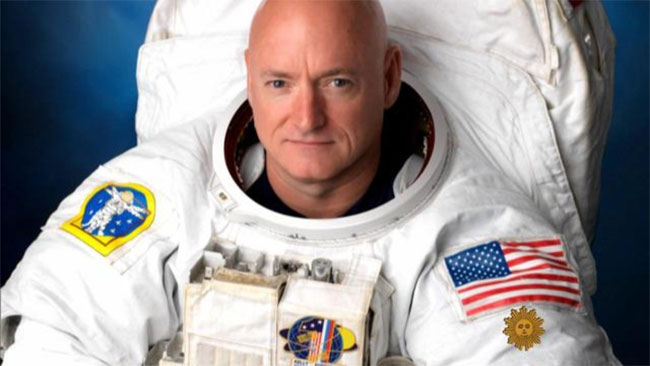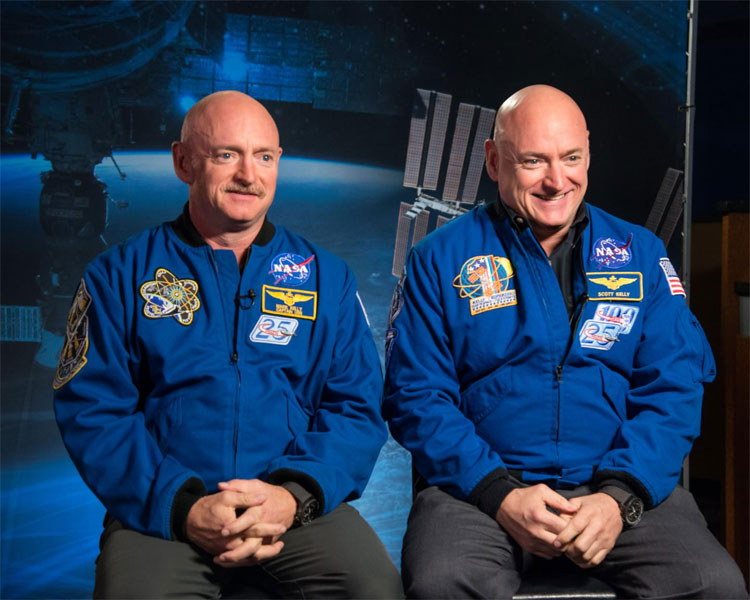NASA research on changes in space
Astronaut Scott Kelly met some changes in gene expression and chromosomes when living on the International Space Station (ISS) for a year.
NASA's twin astronaut studies yield remarkable results, National Geographic reported on March 15. Researched to compare Scott Kelly with astronaut Mark Kelly and look for changes that occurred when Scott lived a year on the International Space Station (ISS) and Mark remained on Earth. Three of the aspects studied are the cognitive, immune and gene functions.

Scott Kelly participated in research on NASA twin astronauts.(Photo: CBS News).
Scott ended his space mission in March 2016. After two years of his return to Earth, scientists found that 7% of his gene expression changed and had not returned to normal. This does not mean that his DNA is mutated, but that the genes change expression.
Genetic sequences are like sequences arranged and responsible for making proteins. Changing the wrong character or character string can cause minor problems or serious consequences, such as mutations that cause tumors to grow. However, most mutations are not revealed or easily detected.
On the other hand, gene expression reflects genes that are active or inactive. In every human body, most cells have the same gene but their genes are expressed in different forms. These types of manifestations make up the heart, brain, eyeballs and other parts, almost like using the same ingredients to process into many different dishes.
The results of NASA's research show the effect of living on the ISS station on the expression of some genes , especially those related to immune function, DNA repair and bone development.

Astronaut Scott Kelly (right) with twin brother Mark Kelly (left).(Photo: National Geographic).
7% of Scott's gene changes the way the universe manifests changes after 6 months he returned to Earth, according to expert Christopher Mason."This is the first time an experiment of this type has been conducted, it sets the standard for future astronaut studies. However, this number may be within the scope of changes that occur with People are under pressure like climbing or scuba diving , " Mason added.
The expression of such changes is not unusual. This still happens when we are sick, or in response to environmental factors. Certainly the fact that Scott lived a year in a micro-gravity environment with reduced oxygen and increased levels of radiation could cause those changes.
Mark and Scott's DNA is not the same. Humans experience random mutations in the genome as they grow and get older. Mark and Scott's genetic sequences were randomly changed in a very small way.
"No twins are identical, and we all accumulate random mutations. Exposure to radiation alone makes Scott have other mutations or more mutations than Mark or anyone else. don't live a year out of space, " explained Susan Bailey at Colorado State University, a member of the research team.
One of the surprising findings from NASA's research is that Scott's chromosome grows longer, at least for white blood cells. The telomeres, the ends of the chromosomes, are long while often shortened when people get older. They quickly shrink to their original length after Scott returned to Earth.
"We are trying to understand the cause of these changes so that we can better assess the risks to human health , " Bailey said. She also noted that Scott's exercise and nutrition regimen on the ISS could contribute to chromosomal changes.
- Things you didn't know about NASA
- NASA applies 3D printing in space research
- Google hired Nasa's space center for space research
- NASA funded 30 new space research projects
- NASA: can suspend research on ISS
- America and Europe increase cooperation in space research
- NASA wants to sell ISS space station in the next 10 years
- Work inside NASA's top-secret control room
- NASA tests space observation aircraft
- NASA gives ISS another 4 years of operation
- The truth behind NASA spending money on pen research in the universe
- NASA can bring astronauts to space by 11 hearing-impaired men
 Van Allen's belt and evidence that the Apollo 11 mission to the Moon was myth
Van Allen's belt and evidence that the Apollo 11 mission to the Moon was myth The levels of civilization in the universe (Kardashev scale)
The levels of civilization in the universe (Kardashev scale) Today Mars, the sun and the Earth are aligned
Today Mars, the sun and the Earth are aligned The Amazon owner announced a secret plan to build a space base for thousands of people
The Amazon owner announced a secret plan to build a space base for thousands of people